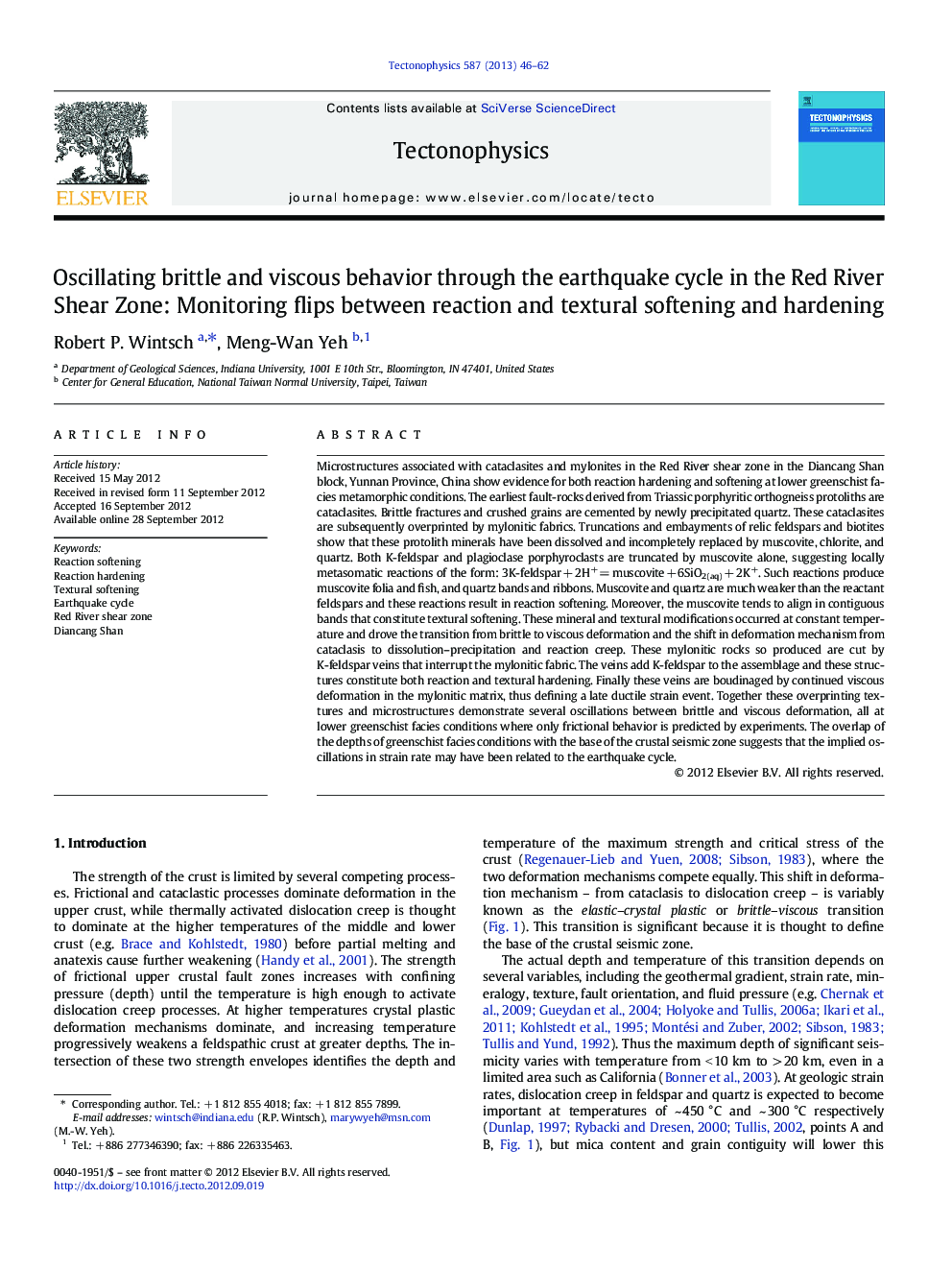| کد مقاله | کد نشریه | سال انتشار | مقاله انگلیسی | نسخه تمام متن |
|---|---|---|---|---|
| 4692506 | 1636798 | 2013 | 17 صفحه PDF | دانلود رایگان |

Microstructures associated with cataclasites and mylonites in the Red River shear zone in the Diancang Shan block, Yunnan Province, China show evidence for both reaction hardening and softening at lower greenschist facies metamorphic conditions. The earliest fault-rocks derived from Triassic porphyritic orthogneiss protoliths are cataclasites. Brittle fractures and crushed grains are cemented by newly precipitated quartz. These cataclasites are subsequently overprinted by mylonitic fabrics. Truncations and embayments of relic feldspars and biotites show that these protolith minerals have been dissolved and incompletely replaced by muscovite, chlorite, and quartz. Both K-feldspar and plagioclase porphyroclasts are truncated by muscovite alone, suggesting locally metasomatic reactions of the form: 3K-feldspar + 2H+ = muscovite + 6SiO2(aq) + 2K+. Such reactions produce muscovite folia and fish, and quartz bands and ribbons. Muscovite and quartz are much weaker than the reactant feldspars and these reactions result in reaction softening. Moreover, the muscovite tends to align in contiguous bands that constitute textural softening. These mineral and textural modifications occurred at constant temperature and drove the transition from brittle to viscous deformation and the shift in deformation mechanism from cataclasis to dissolution–precipitation and reaction creep. These mylonitic rocks so produced are cut by K-feldspar veins that interrupt the mylonitic fabric. The veins add K-feldspar to the assemblage and these structures constitute both reaction and textural hardening. Finally these veins are boudinaged by continued viscous deformation in the mylonitic matrix, thus defining a late ductile strain event. Together these overprinting textures and microstructures demonstrate several oscillations between brittle and viscous deformation, all at lower greenschist facies conditions where only frictional behavior is predicted by experiments. The overlap of the depths of greenschist facies conditions with the base of the crustal seismic zone suggests that the implied oscillations in strain rate may have been related to the earthquake cycle.
Figure optionsDownload as PowerPoint slideHighlights
► Brittle and ductile fault rocks in the Red River shear zone are described.
► Repeated oscillations from brittle to viscous deformation occur.
► Oscillations are identified by truncations of one style of deformation by another.
► The oscillations are probably related to the earthquake cycle.
Journal: Tectonophysics - Volume 587, 5 March 2013, Pages 46–62